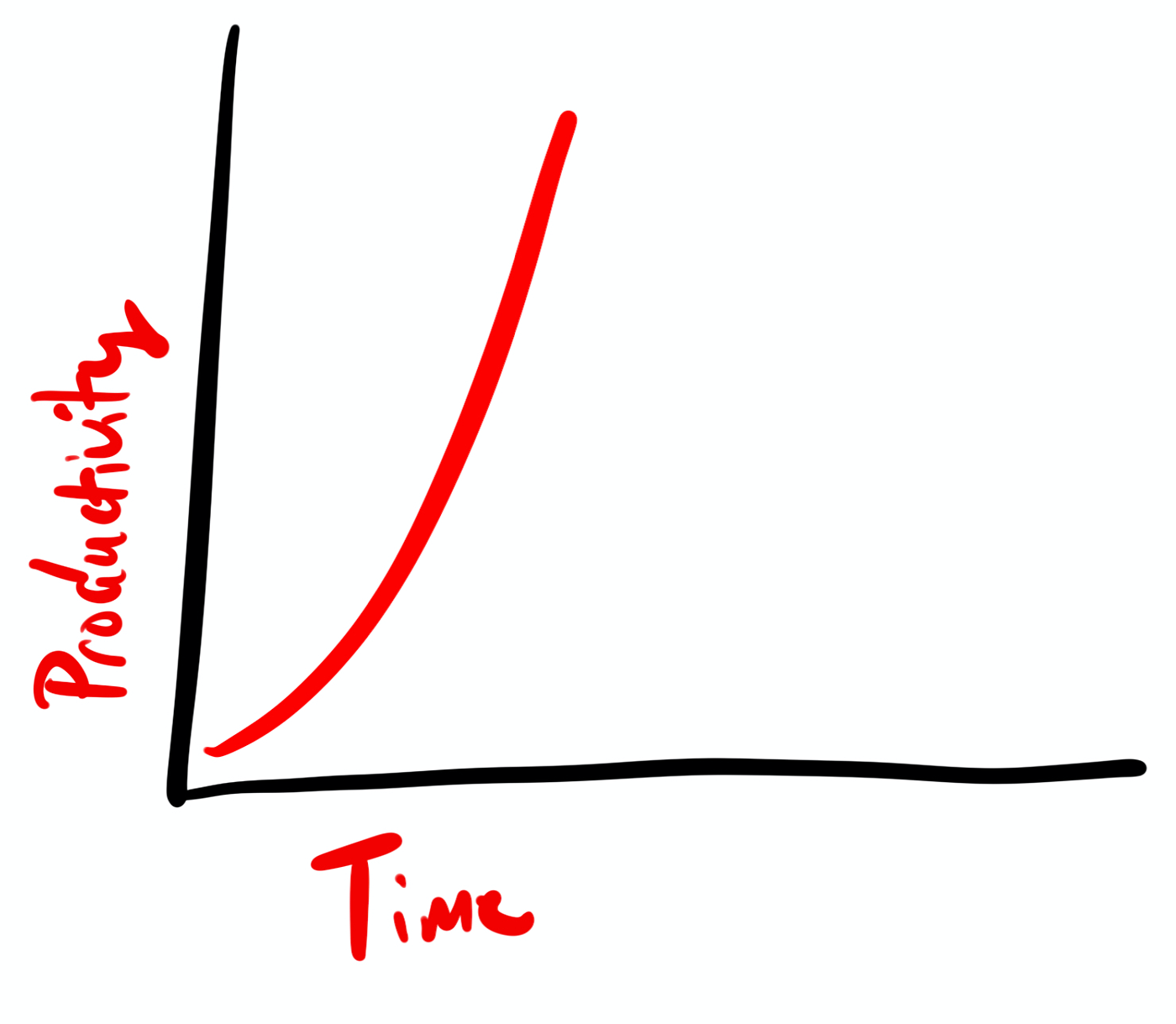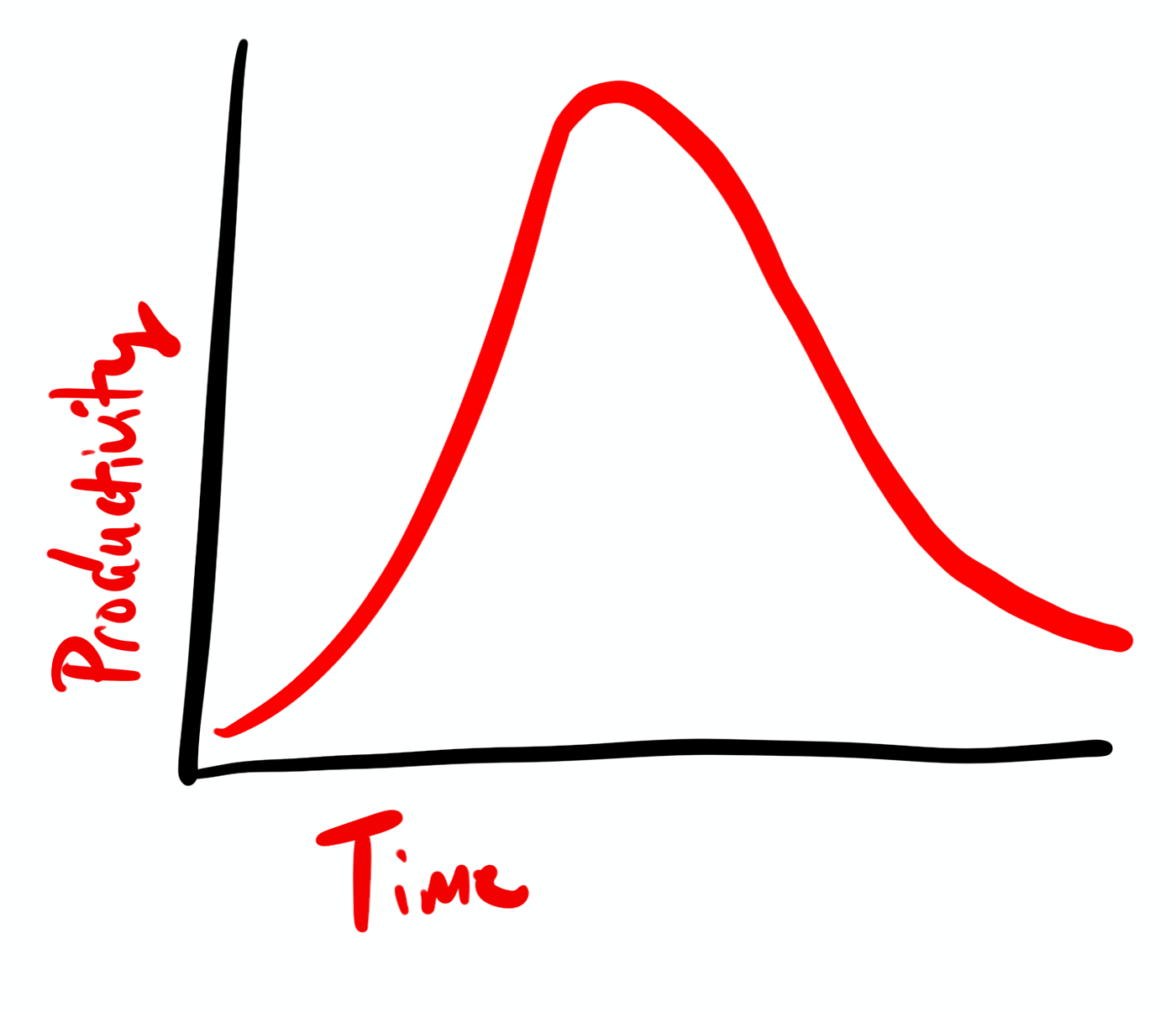
Most productivity nerds have a love/hate relationship with our need to try new tools and systems. Our default is to fight against this urge.
We watch ourselves lusting after a new todo list app or a productivity course that says, “NO! STOP! BAD BRAIN!”
We ask ourselves, “Why aren’t I normal? Why do I have to switch all the time?” We feel like if we were just better people we could marry Todoist for life and never look at a shiny new tool again.
Our usual response is to try to buckle down: to resist the urge to start over, and really try to commit to one system. And sometimes, this is the right move.
But what if sometimes it’s not? What if there’s a hidden wisdom in our desire to try new things?
. . .
Here’s the pattern:
We’re feeling unproductive. So we start researching a new tool. We find Things 3, and thus begins the lust. We consider, we compare, we imagine ourselves using it. We say FINALLY, this is the thing that’s going to fix my productivity. This is the thing that’s going to make all of the difference.
Eventually, we spring for it. We can feel the productivity juice flowing through our veins as we boot it up for the first time. Let the good times roll, baby!
And for a time it DOES.
We’re full of hope and determination and motivation. We’re flying through our inbox. Our todo list is clean. Our partner notices we’re more energetic than usual, there’s a fire burning in our eyes, we’re surfing the waves instead of being tossed under their weight.
If we graphed our productivity levels they might look something like this:
But then, this effect levels off, and begins to drop. Like this:
The new tool or system makes a difference, but it’s usually not as big or as lasting a difference as we hoped. It’s usually incremental, not exponential (remember: usually.)
. . .
So where’s the wisdom here? That graph doesn’t look very wise. In fact, it’s similar to something decidedly unwise:
It looks like fad dieting.
When you do a fad diet like South Beach you often experience an excess of motivation for a few weeks. You stick to it very closely, and you even start to notice it working. Your pants fit better, you have more energy, and you feel unstoppable.
But then something happens a month, or two months, or three months in: the diet gets boring; you’re no longer excited; it becomes a grind. And so, you screw up. It might start with eating one thing that’s off-diet, but before you know it you wake up in the cereal aisle of the grocery store at 3 am pairing spoonfuls of Jiffy with handfuls of Cocoa Puffs and yelling, “I AM KING OF COCOA MOUNTAIN!”
In other words, before you know it you’re completely off your diet. You’ve stopped exercising, you’re snacking all the time, and you’ve gained back all of the weight.
Then you do a new diet, and the process starts over.
So if trying productivity tools and systems is a nerdy cousin of fad dieting, how could it possibly be a good idea?
Fad diets after all don’t work — and are sometimes harmful.
Productivity cycles pop up again
We’ve talked about productivity cycles a lot in this newsletter. It’s clear that both our productivity levels and our ability to stick to diets are subject to the same kind of cycle:
They go up and they go down. It’s very hard to stay utterly consistent over time.
We know that one thing that can help when you’re in a productivity rut is to change your environment:
To recap, this works because when you go somewhere new you:
- Get a blank slate that breaks the operant conditioning which left you feeling stuck and exhausted with your previous workspace
- Stimulate dopamine production in your brain which makes you feel more motivated and allows you to expend more cognitive effort
We haven’t talked about it in the past, but it’s easy to see how this kind of effect might apply beyond your physical environment.
When it comes to fad dieting, having a new regime to follow might trigger the same kind of excess motivation that going to a new environment does.
In a similar vein, having a new todo list app or a new productivity system to follow helps you break out of the doldrums and get super productive for a while.
And here lies the wisdom: that’s why we’re doing it! That’s why we keep lusting after new things: because it makes us feel, and be, productive. For a while.
The difference between fad dieting and productivity tools
But again, is this wise? It only works for a while. And if the change isn’t permanent, is it worth doing? Why should we lean in to the behavior patterns of fad dieting?
Well, there’s a crucial distinction between a fad diet and a productivity tool or system change:
In fad diets, you can gain the weight back.
In productivity, the work you’ve finished is finished forever.
Just because you blew through your todo list on the fleeting thrill of a new todo list app doesn’t mean that the work didn’t get done. It did! You finished it. It’s inscribed in the celestial Done List of the universe, there’s no going back, baby.
In other words, in productivity, we play for keeps. And that’s worth taking advantage of.
Introducing: Dopamine Stacking
Here’s what I’d like to propose:
When it comes to environments, tools, and systems we actually benefit from newness. If, whenever we feel our energy flagging with our todo list, we switch to something new, it might actually help rather than hurt.
Each time we switch we give ourselves a fresh guilt-free start, and we’d get the motivation increased associated with using a new tool.
If we stack one source of newness on top of another all of the time, we might be able to sustain higher levels of productivity and motivation than if we just tried to force ourselves to buckle down.
We could call it Dopamine Stacking.
Is this just a replacement for willpower?
In short: no.
Willpower is the backbone of and the ability to buckle down and focus is an essential part of getting anything done. But willpower has its limits.
Taken too far and your expectation that you should be able to exercise your willpower to march through productivity doldrums just makes you feel bad — it doesn’t make you work harder. If we can use simple tools like Dopamine Stacking to get us through periods of low motivation, we should have them as part of our toolkit.
It’s not lazy; it’s intelligent.
Is this just a replacement for rest and recovery?
Again, no. You can’t stack forever. Rest and recovery is an important part of any productivity routine, and going to a new environment or using a new tool is not a permanent replacement for rest.
You can think about it like the relationship between caffeine and sleep. You can intelligently use caffeine to give yourself an energy boost when you need it — but caffeine is not a replacement for sleep, and taken to its extreme can be dangerous.
That’s not what we’re talking about here. We’re talking about leaning into the wisdom of using newness to generate more motivation and productivity within the bounds of a healthy lifestyle.
How should we do it?
Well, I’m just starting to figure this out myself.
But I think a key principle to follow is to do the minimum possible extra work to get your hit of motivation, and then translate that back into productive output.
Here are some low cost ways to dopamine stack:
- Switching to a new environment
- Trying a new todo list
- Switching from paper to digital notes
- Switching from digital notes to paper
- Switching to a new work schedule
- Fasting in the morning
- Switching from coffee to tea
You can dopamine stack in two ways:
- Any time you feel your energy flagging, try something new.
- Rotate through tools, systems, and environments on a schedule.
This is something I’ve been guiltily doing subconsciously for a while now. But for the next month I’m going to try Dopamine Stacking on purpose. I’ll be back next week with a personal plan, and an early look into the results.
Find Out What
Comes Next in Tech.
Start your free trial.
New ideas to help you build the future—in your inbox, every day. Trusted by over 75,000 readers.
SubscribeAlready have an account? Sign in
What's included?
-
Unlimited access to our daily essays by Dan Shipper, Evan Armstrong, and a roster of the best tech writers on the internet
-
Full access to an archive of hundreds of in-depth articles
-
-
Priority access and subscriber-only discounts to courses, events, and more
-
Ad-free experience
-
Access to our Discord community







Comments
Don't have an account? Sign up!